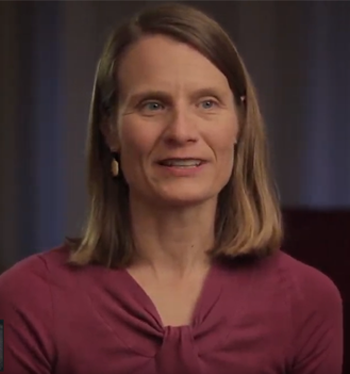Christine Cunningham, preK-12 Engineering & Science Educator

Two decades ago when I started thinking about doing engineering with K–12 students, it was a new idea and there was paucity of research in this area. Conducting a literature review related to preK–12 engineering yielded almost no articles. Very few resources, curricula, tools, or frameworks existed. The small number that did exist focused exclusively on the middle or high school level. It was very clear that much work needed to be done, including designing and creating curricula, instructional strategies, and assessments informed by research.
Today it’s exciting to survey the field. The introduction of the discipline of engineering into classrooms, informal settings, and state and national standards has been accompanied by research that has helped to shape the field. Researchers and materials developers have probed what age-appropriate engineering looks like from preschool through high school. Frameworks for thinking about what and how children and educators can or should learn about core concepts and practices of engineering have been articulated. Research-based curricular and professional development materials have been developed and pressure-tested in the field. Digital tools and scaffolds provide engaging experiences for students. Research instruments and methodologies are being created. And importantly, a burgeoning corpus of high-quality research related to preK–12 engineering education is being produced that can guide further development of the field.
One of the promising possibilities that a new field with few entrenched ways of operating offers is the opportunity to think carefully from its inception about best practices. These can include an examination of what is important, why, and for whom. How do we create learning environments that are inclusive and equitable? How do engage students in practices and three-dimensional learning? How can we integrate engineering with other disciplines in authentic, relevant ways? How do we draw upon children’s existing knowledge and identities as we open and expand possibilities? How can we support educators as they become familiar with this new discipline? How can classrooms, informal learning spaces, caregivers, and communities collaborate to nurture engineering learning and participation? How do we research, measure, and assess engineering-education-related outcomes?
The emerging research agenda in preK–12 engineering education is not only identifying ways to teach engineering, build affiliation among students, and connect engineering to science, mathematics, social studies, literacy, and the arts, but also showing unique learning opportunities for students offered by engineering ways of thinking. For example, the consideration of criteria and constraints, production of prototypes, application of uses of evidence to improve design, and learning from failure are just a few of the ways that engineering advances learning for students. Furthermore, the unique problem-solving strategies of engineering offer students new ways to improve their world.
NSF’s DRK12 engineering education research grants are probing these important questions. A nascent corpus of preK–12 engineering education scholarly work now exists. A community of researchers has been established and is growing. Of course, the field of preK–12 engineering education is still quite new so there are many, many research questions that still need to be posed and answered. We live much of the time in the designed world, yet most people know little about how it is created. The new directions in engineering education with a preK–12 focus offer much potential to engage students and transform education.
Because preK–12 engineering education is still a nascent field, there is much more research to be done! I am particularly interested in two areas:
(a) Research focused on how students (and teachers) are engaging in engineering. What is happening? How are students and the classroom community constructing engineering knowledge and identities? How are teachers supporting this work (or not)? How can we support high-quality engineering environments with resources or professional development? Video with artifacts, surveys, and interviews can be collected and then analyzed using careful discourse analysis to understand the larger system. We need to peer closely into classrooms and interactions to understand more about how engineering learning happens.
(b) Measurement and assessment related to engineering. There is a big challenge related to aligning what we can measure and assess about engineering with practices and other interactions that are difficult to capture with surveys and instruments. We want kids to be engaged in practices and think about processes and innovation and creativity. But how do you provide evidence that these are happening on a large scale? There is much work to figure out if instruments can be developed that provide data that resonate with what we hear and see from teachers and students are the critical outcomes of engineering. The bigger question, perhaps, is how you “show” in measurable ways what the important outcomes of engineering are? Or can you? It’s not a question unique to engineering but one that has been vexing efforts to measure what is really important in any way that can be scaled.
---
Any opinions, findings, and conclusions or recommendations expressed are those of the author(s) and do not necessarily reflect the views of the National Science Foundation.